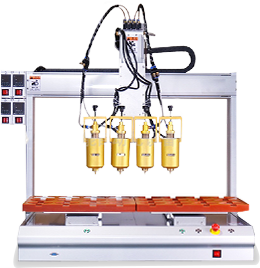

Network equipment server cabinet stamping parts, as the core components of data center infrastructure, are made of high-strength cold-rolled steel plates and rely on precision stamping technology. Through multi-station mold stamping, bending, and forming, the cabinet's frame, side panels, rear doors and other key structures are constructed, and functional modules such as honeycomb heat dissipation holes, mounting rails, and reinforcement brackets are integrated. Adapting to the standard 19-inch cabinet system, it is widely used in data centers, enterprise computer rooms, and cloud computing centers. It provides physical protection, heat dissipation guarantee, and modular installation support for servers, switches, and storage devices. It accurately matches the needs of high-density integration and long-term stable operation of network equipment, and is the basic hardware to ensure efficient operation and maintenance of data centers.
(II) Features Comparison Table
Comparison dimensions | Server cabinet stamping parts | Ordinary cabinet accessories | Value realization |
Bearing strength | ≥800kg | ≤500kg | Support high-density equipment integration |
Adaptation accuracy | ±0.05mm | ±0.2mm | Ensure automated assembly efficiency |
Heat dissipation efficiency | Increase by 30% | Conventional heat dissipation | Reduce the probability of equipment failure |
Production cycle | 7 - 10 days (molding) | 15 - 20 days | Quickly respond to equipment room construction needs |
III. Product Details
(I) Process Flow
1. Mold Development: Based on the ANSI/EIA-310-D cabinet standard, a multi-station progressive die is designed, integrating blanking, punching, and bending functions. After CNC milling and EDM finishing, the mold life exceeds 1 million times, ensuring the consistency of batch parts.
2. Raw material processing: SPCC cold-rolled steel plate (thickness 1.2-2.0mm) is selected, and pre-treated with degreasing, phosphating, and passivation to enhance the adhesion of the surface coating and lay the foundation for the spraying process.
3. Stamping: On a 630-1000T servo punch press, a continuous die is used to stamp the cabinet frame and heat dissipation side panel in one step, and the M6 installation screw hole tapping and guide rail bracket riveting are completed simultaneously, with a molding accuracy of ±0.05mm.
4. Surface treatment: electrostatic spraying process (coating thickness 60-80μm), optional RAL7035 (cabinet gray) and other colors, salt spray test ≥960 hours, suitable for the constant temperature and humidity environment of the data center all year round.
(II) Typical application scenarios
Data center cabinet: as the main frame of the cabinet and the rear door heat sink, the honeycomb holes cooperate with the air conditioning system to achieve cold and hot channel isolation, ensuring the stable operation of 300+ server clusters, such as Tencent Cloud and Alibaba Cloud computer room projects.
Enterprise computer room renovation: replace old cabinet accessories, accurately adapt to Dell and Huawei server installation, and quickly upgrade cabinet functions through modular stamping parts (power compartment bracket, cable management trough) to meet the expansion needs of network equipment in the 5G era.
Edge computing node: provide protective side panels and reinforcement frames for outdoor integrated cabinets. The high strength and corrosion resistance of stamping parts ensure that edge servers can operate 7×24 hours in high temperature and high humidity environments, such as smart transportation and industrial Internet of Things scenarios.
(III) Quality control system
The “three inspections + one test” standard is implemented: the first piece is scanned in full size by a three-coordinate measuring machine, and every 200 pieces are sampled during the process to monitor the hole tolerance and coating thickness. 100% of the finished products pass the load-bearing test (loaded 1200kg for 48 hours) and heat dissipation simulation test. The key parts comply with the GB/T 3047.2-2023 cabinet standard, building a solid “metal defense line” for the data center infrastructure.
 Headquarters tel.
Headquarters tel. E-mail.
E-mail.